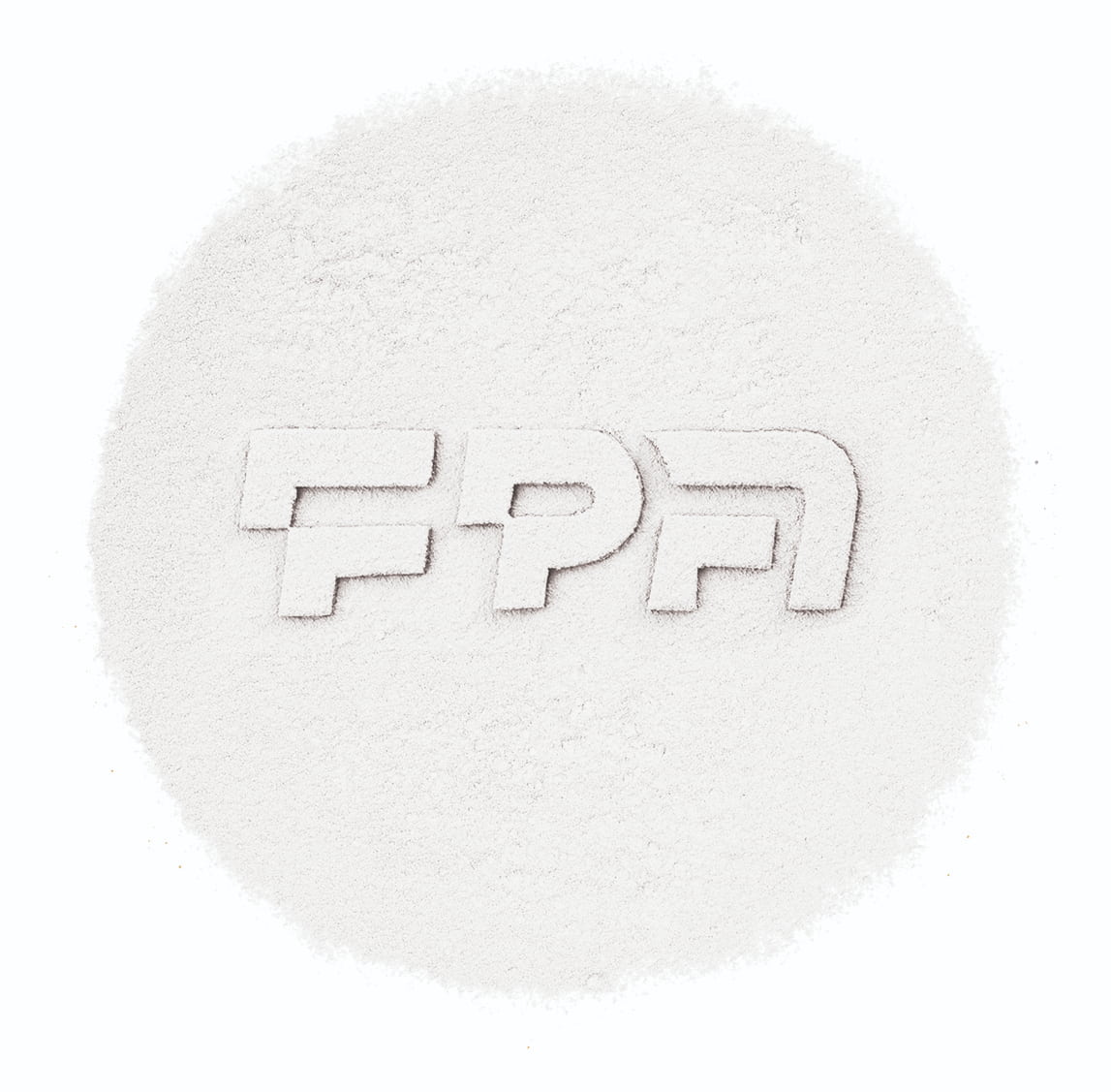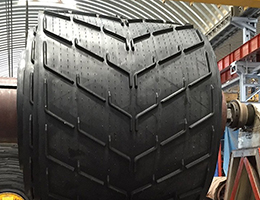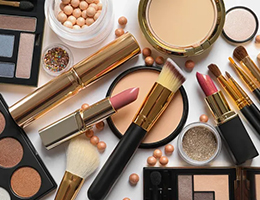Talc

Talc is a kind of hydrated magnesium silicate found in nature as metamorphosed rocks. Micronized powder of this mineral is used in the paint industry.Talc consumes as a Filler, in rubber industry (filler, paper industry filling and leveling) and ceramic industries (sound elasticity high permeability and cost-effective coefficient), cosmetic industry, ink baby powder, textile and also in medicine.Softness, good permeability coefficient, neutrality against solution and specific weight are the main qualities of talc in paint industry, which have caused it to rival titan dioxide.Talc is practically insoluble in water and in alkalis and weak acids. It is the the world's softest mineral and neither explosive nor flammable. Although it has very little chemical reactivity with a marked affinity for certain organic chemicals, i.e. it is organophilic. More than 900°C, talc progressively loses its hydroxyl groups and above 1050°C, it re-crystallizes into different shape of enstatite (anhydrous magnesium silicate). Talc's melting point is at 1500°C.
Talc or talcum powder, a naturally occurring mineral, has a long and fascinating history. From its formation deep within the Earth to its versatile applications in various industries, talc is a substance that deserves our attention.

How talc is produced?
Talc powder could be an actually happening mineral that's fundamentally composed of magnesium, silicon, and oxygen. It is broadly utilized in different businesses, including beauty care products, pharmaceuticals, ceramics, and more. The Talc Powder Producer includes a few steps, from mining to handling, to make the fine, powdery substance that's a common fixing in various customer items.
Mining
The primary step in powder generation is mining. Powder stores are more often than not found in transformative rocks, regularly near other minerals like asbestos and pyroxenes. Diggers extricate powder minerals from the soil utilizing conventional strategies such as impacting and burrowing.
Sorting and Transportation
After being extricated, the mineral experiences advanced refinement in preparing plants. It is sorted and isolated from pollution such as rocks and minerals to guarantee tall quality.
Pulverizing and Pounding
After the powder mineral is brought to the preparing plant, it is pulverized and ground into a fine powder, which makes a difference in isolating the talc from the encompassing shake and minerals.
Buoyancy
To assist in decontaminating powder, water and chemicals are included, permitting powder particles to drift to the surface and be isolated from pollution. To assist in decontaminating powder, water and chemicals are included in the powdered metal, permitting powder particles to drift to the surface and partitioned from debasements.
Drying
The separated talc is then dried to remove excess moisture and create a consistent, workable material.
Milling
Talc particles are subjected to milling, where they are further ground into a fine powder. This step ensures that the talc particles are of the desired size and consistency.
Purification
To remove any remaining impurities, the talc undergoes a purification process. Various techniques, including magnetic separation and high-intensity electric fields, are employed to achieve the desired level of purity.
Final Grinding
The purified talc is subjected to a final grinding process to produce the fine, soft powder that is commonly associated with talc.
Packaging
Once the talc reaches the desired consistency and purity, it is packaged and prepared for distribution. Talc can be packaged in various forms, such as loose powder, pressed powder, or as an ingredient in cosmetics and other products.
To read more about what is talc, click here.
Talc Powder Manufacturer
The best Industrial Talc Powder is characterized by a combination of key attributes and qualities that set it apart in the industry. These manufacturers prioritize quality, safety, and ethical practices, ensuring they meet regulatory standards while also catering to customer needs. Here are the essential characteristics of a top talcum powder manufacturer:
-
Quality Assurance
The foremost characteristic is an unwavering commitment to quality. The best manufacturers use high-quality talc and adhere to rigorous quality control standards to produce a consistent and safe product.
-
Safety and Compliance
They strictly follow all relevant safety regulations and guidelines to guarantee their products are safe for consumers. This includes rigorous testing for contaminants and adherence to health and safety standards.
-
Variety
Leading manufacturers offer a range of talcum powder products to cater to diverse consumer needs. This includes fragrance-free, hypoallergenic, and specialty formulations.
-
Packaging and Presentation
The packaging is not just a functional aspect; it's also a part of the overall experience. Top manufacturers invest in attractive and user-friendly packaging.
To get information about Farayand powder Alvan, one of the best manufacture of talc, click here.

What points should be considered when buying talcum powder?
Buying talcum powder from Talc producer may seem straightforward, but several important points must be considered to ensure you choose the right product for your needs. Talcum powder is a common personal care product used for various purposes, such as absorbing moisture, preventing chafing, and providing a smooth finish to the skin. Here are some key points to consider when purchasing talcum powder:
Ingredients
Before purchasing talcum powder, carefully examine the list of ingredients from talc manufacture. Talcum powder is traditionally made from talc, a magnesium, silicon, and oxygen mineral. However, some powders may contain additional elements, such as fragrances, preservatives, or other additives. If you have sensitive skin or allergies, opt for a talcum powder with minimal ingredients to reduce the risk of irritation.
Fragrance
Talcum powders are often scented to provide a pleasant aroma. Consider your personal preferences and any potential sensitivities to fragrances. If you have allergies or skin sensitivities, choosing a fragrance-free or hypoallergenic talcum powder might be advisable to minimize the risk of skin irritation.

Texture and Fineness
The texture and fineness of talcum powder can vary between products. Some Talc Suppliers have a coarser texture, while others are finely milled. The choice depends on personal preference and the intended use. Finely milled powders are often preferred for cosmetic purposes, as they provide a smoother finish, while coarser textures may be suitable for areas prone to chafing.
Absorbency
One of the primary purposes of talcum powder is to absorb moisture and reduce friction. Consider the absorbency level of the powder, especially if you plan to use it in areas where moisture control is crucial, such as underarms or between folds of skin. Look for powders with high absorbency to ensure adequate moisture control.
Packaging
Pay attention to the packaging of the Talc factory. A well-designed and secure container can prevent spillage and make the application more convenient. The powder can be messy, so a container with a tight-sealing lid or a shaker top can help control the powder dispensed powder and minimize waste.
Brand Reputation
Choose talcum powder from a reputable Talc Powder Manufacturer with a history of producing quality personal care products. Reading customer reviews and researching the brand's reputation can give insights into the product's effectiveness and safety. Trusted brands are more likely to adhere to quality standards and provide reliable products.
Safety Concerns
Recently, concerns have been raised about the safety of talcum powder due to potential asbestos contamination in some products. Asbestos is a known carcinogen, and its presence in talc-based products can pose health risks. To mitigate this concern, opt for talcum powders that explicitly state they are asbestos-free, and consider using alternative products like cornstarch-based powders if you are still apprehensive.
Intended Use
Consider the specific purpose for which you plan to use talcum powder. Different formulations are tailored to each use, whether for skincare, personal hygiene, or cosmetic purposes. For example, cosmetic talcum powders may have added ingredients for a silky finish, while powders designed for hygiene may focus on absorbency.

The wholesale price of talc
bulk talc price, like many other commodities, depends on several factors. These factors can include the quality and grade of the talc, market demand and supply conditions, production costs, transportation costs, and global economic factors.
The quality of the talc, determined by factors such as its purity and particle size, can significantly impact talc price, as higher quality talc is often in greater demand and commands a higher price. Market dynamics play a critical role, as changes in demand from various industries, like cosmetics, pharmaceuticals, and ceramics, can influence talc prices.
Production and transportation costs are also important; for instance, talc mined and processed in regions with lower labor and energy costs may be priced lower. Furthermore, global economic conditions and currency exchange rates can affect the international trade of talc, influencing its wholesale price.
Applications
Rubber industry is normally using Talc due to its mechanical and physical properties.
Talc is used as a lubricant because of its smooth surface. When it’s used between two layers in rubber production, it avoids stickiness and friction.
Talc powder makes a very good reinforcing performance in rubber and it increase the tensile and tear strength as well as dimensional stability of final product as a result. Moreover, due to its excellent adsorption and affinity, it’s able to improve the fluidity in processing.
Due to its excellent thermal stability, high reinforcement, convenient addition, small amount of addition, high thermal decomposition resistance, good dispersion and anti-ultraviolet characteristics, it has variety of applications in rubber products such as cables, tires, hoses and gloves, rubber threads, etc.

Talc is hydrophobic and opaque is nature, so that will help to improve the water repulsion and water resistant of paints and coatings.
Talc can also increase the viscosity of the paint. Consequently, it will facilitate the convenient and easy dispersion of paint.
When it comes to automobile or industrial powder coatings and paints where there are very fine and micronized particles, fine and readily micronized Talc can fill up even the smallest spaces when metallic surfaces are covered by powder coatings and paints.
Due to its lamellar (platy and layered) structure, it reinforces paint films by improving adhesion. As a result, it prevents cracking and peeling of the paint from the walls.

Talc enjoys a better thermal conductivity when it compares to polymer and that means a quicker transmission through the mixtures is achieved when Talc is used. As a result, plastic compounds are processed and cooled faster due to presence of Talc.
Filled polymers with fine and lamellar Talk powder, are able to withstand more strain without deformation in comparison with unfilled polymers. Moreover, Talc powder gives a much higher creep resistance when it compared to other mineral fillers.
Talc is basically a soft mineral and simply micronized to fine particle sizes. That makes Talc a very good option to fill up the very small spaces within polymer compounds which increases the impact strength as well as stiffness of plastics and polymers.

Being soft and chemically inert, powdered Talc lowers the abrasion to paper machine fabrics and mechanical parts during the production process. Talc is also having a lamellar (platy and layered) structure and it can spread across the surface and make lower spots, minimize defects and holes in final output of paper.
Talc is organophilic and hydrophobic in nature. Thus, when it’s used in pulp processing, it will reduce the tackiness arising from stickies like plant resins and provide pitch control by preventing agglomeration on machineries of production line as a result.
It also improves the important characteristics such as ink gloss, scuff resistance and optimum ink transfer which will consequently increase the printability of finished paper. Whiteness of Talc will also improve the whiteness of final paper output.
Micronized Talc provides with a smoother finish which increase the quality of printing and the high opacity of Talc improve the opacity of the finished paper.

Talc powder is also used in ceramic industry due to its physical and chemical properties. As it’s having a high thermal resistance, it will improve the resistance against the thermal shocks of ceramics and reduces the fractures as a result.
Talc powder improves the resistance of ceramic against the acids since it’s a chemically inert material and has considerably low reactivity with acids.Due to low iron content as well as high magnesium content of Talc powder, it improves the whiteness when it’s used in ceramic production process.
Pure Talc helps to prevent the water leakage in sanitaryware since it’s hydrophobic in nature. Moreover, customization of Talc based on customers’ needs and requirements is basically achievable since the grinding process of Talc is controllable.

Talc powder is also used in many other industries like food processing, cosmetics, drugs and pharmaceutical, etc.
In food processing, due to its lamellar structure, it provides a shiny polish when applied on outer surface of pulses. Moreover, it avoids stickiness between the pulses.
In cosmetics, Talc is the basic ingredient of almost all cosmetics in powdered form because of its oil absorption characteristic. It has also a good oil absorption capability which is required in some cosmetics.
In pharmaceutical, it provides required lubrication when applied on outer surface of capsules and tablets and facilitate the swallowing process. It has also many positive advantages which is in line with requirements of pharmaceutical products.


